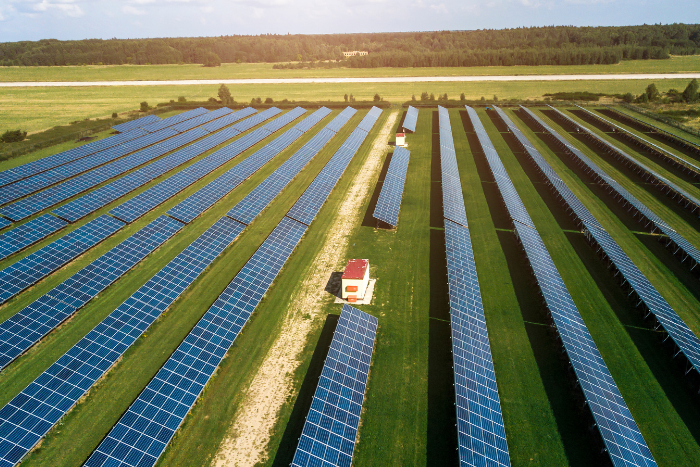Renewable energy installations in India reached an annual capacity of 18.5 GW for the fiscal year ending on March 31, 2024. India touched a record 7.1 gigawatts (GW) in March alone. The growth is primarily attributed to solar installations, reported a study by Rystad Energy.
Speaking to TOI, Rohit Pradeep Patel, Vice President of Renewables and Power Research at Rystad Energy highlighted critical challenges, including ensuring grid stability alongside the higher integration costs that come with introducing more renewable capacity. “A strategic solution lies in balancing this clean energy embrace with targeted exports…,” he told TOI.
Domestic solar equipment demand has surged due to the increase in installations, with more than 6.2 GW of new capacity from solar alone. India’s solar panel production capacity stood at 68 GW as of March 2024, with the country looking to expand its export markets, particularly to the US. Despite stiff competition from Southeast Asian manufacturers, Indian exports are expected to rise following the US imposition of duties on panels from Southeast Asia, potentially as high as 254% starting June 2024.
US manufacturers want tariffs on South-east Asian solar imports, should India worry?
The American Alliance for Solar Manufacturing Trade Committee filed anti-dumping and countervailing duty petitions against solar imports from select Southeast Asian countries. The petitions alleged that Cambodia, Malaysia, Thailand and Vietnam are flooding the US market with cheap solar cells that threaten the domestic industry, reported CNBC and other news outlets.
The report said the manufacturers requested that the Commerce Department impose tariffs on solar cell imports from the four countries as a remedy. They alleged that China is trying to circumvent tariffs by shifting manufacturing to the four countries. But many other solar and renewable energy trade associations said they don’t want tariffs on imports arguing that it would create market volatility in the US.
According to a Mercom report, there is a possibility that Indian exports could also be covered, according to investment banking firm ROTH Capital Partners. The petitioners could also consider bracketing India with these countries, the report said, adding that Indian manufacturers cannot take the US market for granted, and companies need to have alternative strategies if such a scenario plays out.
Solar sector sees 81% drop in VC funding in Q1, corporate funding dips 4%
The global venture capital funding for the solar sector amounted to $406 million across 13 deals In Q1 2024, an 81% decrease year-over-year (YoY) from the $2.1 billion raised in 18 deals. Compared to Q4 2023, the funding also fell by 68%, from $1.3 billion raised in 19 deals. The solar sector secured $8.1 billion in corporate funding through 41 transactions in the first quarter (Q1) of 2024, marking a 4% decrease from the $8.4 billion raised in 42 deals during the same period in 2023.
Climate change will impact the value and optimal adoption of residential rooftop solar
Rooftop solar will jump 19% in value because of impacts of climate change by the end of the century, under the moderate warming Representative Concentration Pathway (RCP) 4.5 pathway, a new study found. RCP scenarios include time series of emissions and concentrations of the full suite of greenhouse gases (GHGs) and aerosols and chemically active gases, as well as land use/land cover.
The authors quantified the household-level effects of climate change on the value of rooftop solar in the US. They used “empirical demand data” for more than 2,000 households, “household-level simulation and optimisation models” and weather data for historic and future climates. The paper found that by 2100, climate change will “increase techno-economically optimal household capacity by up to 25%”. The authors said the increase in value is “robust across cities, households, future warming scenarios and retail tariff structures”.
About The Author
You may also like
India’s EV revolution: Are e-rickshaws leading the charge or stalling it?
India’s solar output grows at slowest pace in six years in first half of 2024
India’s solar expansion threatened by transformer shortage
India to invest $360 billion in RE, infra in next seven years: Moody’s
China leads in annual offshore wind developments for the sixth year in a row: Report


